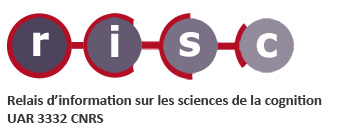Non-Cartesian Sparkling encoding for High spatio-temporal resolution functional Magnetic Resonance Imaging (fMRI) at 7 Tesla and beyond
Encodage non-cartésien Sparkling pour l'Imagerie par Résonance Magnétique fonctionnelle (IRMf) à haute résolution spatio-temporelle à 7 Tesla et au-delà
Résumé
Functional MRI (fMRI) is currently one of the most commonly used functional neuroimaging techniques to probe brain activity non-invasively through the blood oxygen level-dependent (BOLD) contrast that reflects neurovascular coupling. It offers an interesting trade-off between spatial and temporal resolution in order to study the whole brain as an aggregation of intrinsic functional systems. The quest for higher spatial and/or temporal resolution in fMRI while preserving a sufficient temporal signal-to-noise ratio~(tSNR) has generated a tremendous amount of methodological contributions in the last decade ranging from Cartesian vs. non-Cartesian readouts, 2D vs. 3D acquisition strategies, parallel imaging and/or compressed sensing~(CS) accelerations and simultaneous multi-slice acquisitions to cite a few. In this work, we focus on the use of CS in fMRI; more specifically, we consider Spreading Projection Algorithm for Rapid K-space sampLING (SPARKLING) encoding scheme.The main focus and goal of this thesis involves the evaluation of 3D-SPARKLING as a viable acquisition scheme for high-resolution whole-brain fMRI. In this regard, we initially compared its capabilities with state-of-the-art 3D-EPI. After observing higher sensitivity to static and dynamic magnetic field imperfections in 3D-SPARKLING data, we established an experimental protocol to correct them. Finally, we studied the capabilities and limitations of employing a sliding-window reconstruction in combination with the SPARKLING encoding scheme to enhance temporal resolution during image reconstruction in fMRI retrospectively. A simulation study where the ground truth is controlled was conducted and demonstrated the possibility of detecting high-frequency oscillations in the BOLD signal and separating physiological noise from neural activity.
L'IRM fonctionnelle (IRMf) est actuellement l'une des techniques de neuroimagerie fonctionnelle les plus utilisées pour sonder l'activité cérébrale de manière non invasive grâce au contraste dépendant du niveau d'oxygène dans le sang (BOLD) qui reflète le couplage neurovasculaire. Elle offre un compromis intéressant entre la résolution spatiale et temporelle afin d'étudier le cerveau entier en tant qu'agrégation de systèmes fonctionnels intrinsèques. La recherche d'une résolution spatiale et/ou temporelle plus élevée en IRMf tout en préservant un rapport signal/bruit temporel suffisant~(tSNR) a généré une quantité considérable de contributions méthodologiques au cours de la dernière décennie, allant des methodes d'encodage cartésiennes ou non cartésiennes, des stratégies d'acquisition 2D ou 3D, de l'imagerie parallèle et/ou de échantillonnage compressif (CS) et des acquisitions multibande, pour n'en citer que quelques-unes. Dans ce travail, nous nous concentrons sur l'utilisation du CS dans l'IRMf, plus spécifiquement, nous considérons le schéma d'encodage SPARKLING.L'objectif principal de cette thèse est d'évaluer 3D-SPARKLING en tant que schéma d'acquisition viable pour l'IRMf à haute résolution et pour cerveau entier.À cet égard, nous avons d'abord comparé ses performances avec l'état de l'art en matière: 3D-EPI. Après avoir observé une plus grande sensibilité aux imperfections statiques et dynamiques du champ magnétique dans les données 3D-SPARKLING, nous avons établi un protocole expérimental pour les corriger. Enfin, nous avons étudié les possibilités et les limites de l'utilisation d'une reconstruction par fenêtre glissante en combinaison avec le schéma d'encodage SPARKLING pour améliorer rétrospectivement la résolution temporelle pendant la reconstruction des images en IRMf. Une étude de simulation dans laquelle la vérité terrain est contrôlée a été menée et a démontré la possibilité de détecter les oscillations à haute fréquence dans le signal BOLD et de séparer le bruit physiologique de l'activité neuronale.
| Origine | Version validée par le jury (STAR) |
|---|
